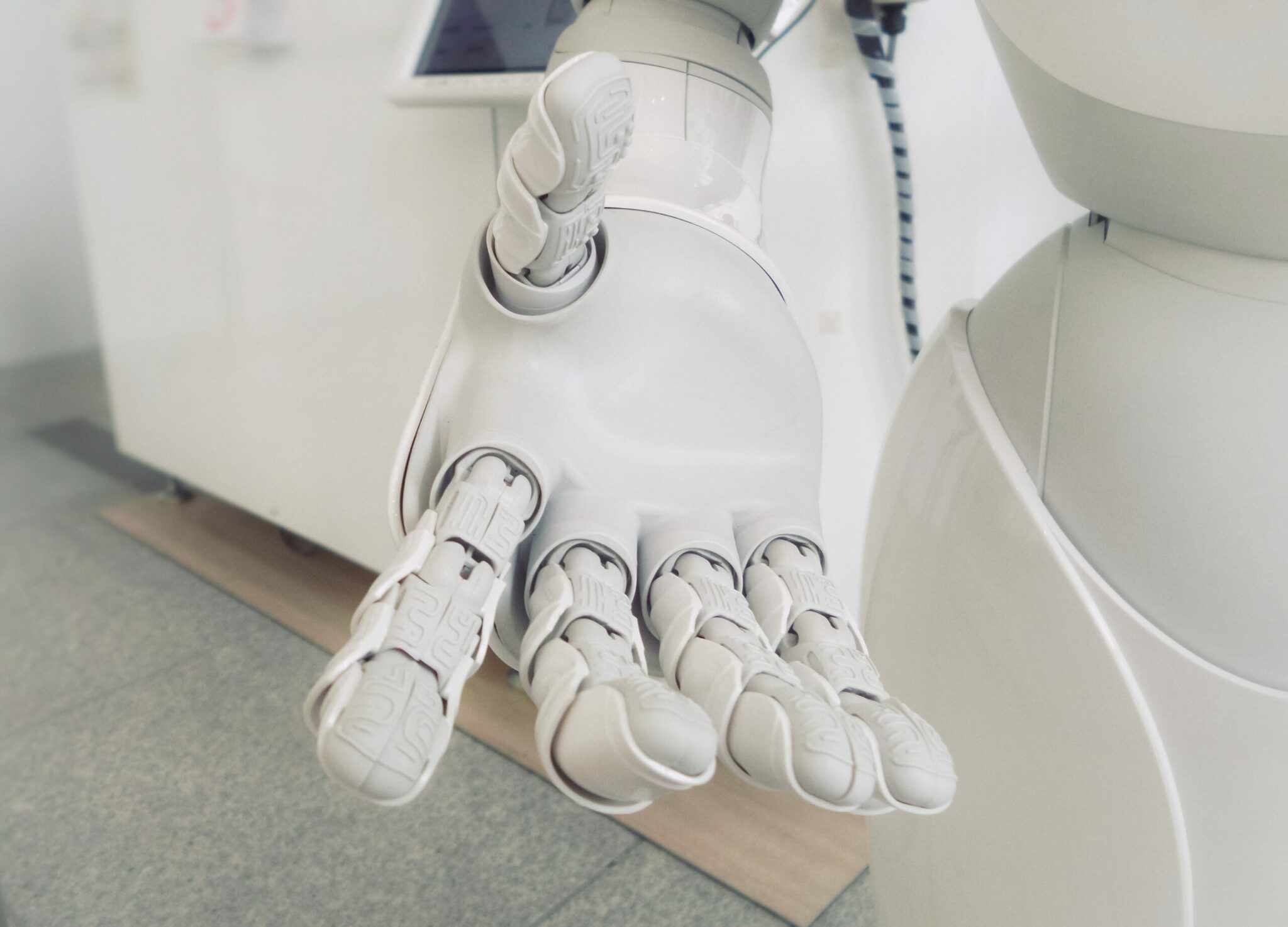Imagine a future where robots enhance daily life in ways we cannot yet fully grasp. The field of robotics is advancing rapidly, transforming industries from healthcare to manufacturing. Companies are investing heavily in technology, creating a demand for skilled professionals who can drive this innovation.
The growth of medical robots and advancements in industrial robotics highlight the critical need for specialized talent in this field. Skilled individuals significantly impact both development and competitive advantage in an ever-growing market. As robotics continues to evolve, so does the necessity for expertise in robotics engineering, software development, and automation technologies.

Recruiting the right talent in robotics presents challenges, from high costs to skill shortages. Organizations must adapt their strategies, focusing on targeted recruitment campaigns and partnerships with educational institutions. This article explores the current landscape of robotics recruitment, its challenges, and effective strategies for finding the talent required for tomorrow’s innovations.
Current Landscape of Robotics
The global robotics market is experiencing significant growth, with medical robotics leading the way. Valued at USD 27.7 billion in 2023, the medical robotics market is projected to soar to USD 127 billion by 2033. North America currently holds the largest market share, valued at USD 9.6 billion in 2023. This growth is largely driven by the adoption of robot-assisted surgical instruments and a rise in surgical procedures. In contrast, the Asia-Pacific region is anticipated to experience the fastest growth, with a projected CAGR of 19.7%. Innovations in surgical robotics, including artificial intelligence and machine learning, are improving surgical outcomes across various specialties such as orthopedic and neurosurgery.
Growth in the Medical Robots Market
The medical robotics market is poised for further growth. It is projected to reach USD 52.41 billion with a CAGR of 15.69% from 2024 to 2032. In North America, the US is expected to account for a 74% share of the medical robotics market by 2022. The global market for surgical robotics is set to grow from USD 6.1 billion in 2020 to USD 11.6 billion by 2025. By 2029, the medical robots market could be worth USD 33.8 billion with a CAGR of 16.1%. The rising use of surgical robots and the increasing number of robot-assisted surgeries contribute to this expansion.
Advancements in Industrial Robotics
The industrial robotics market is also seeing considerable growth, driven by technological integration. There is an increase in the number of industrial robots worldwide, which is expected to rise from 750,000 to over 3 million by 2020. Advancements in artificial intelligence and machine learning are boosting the capabilities of these robotic systems. North America’s medical robotics market, valued at USD 9.6 billion in 2023, benefits from major manufacturers and a preference for minimally invasive procedures. The Asia-Pacific region is an emerging market, with a forecasted CAGR of 19.7%, expected to reach USD 45.6 billion by 2033. This region may even surpass North America in market size.
Importance of Specialized Talent in Robotics
The robotics industry faces unique challenges in recruiting specialized talent. Designing, building, and operating robots require diverse skills. The medical robotics market is set to rise from USD 11.5 billion in 2024 to around USD 38.7 billion by 2034. This growth will create high demand for skilled robotics professionals. Companies need high-impact employees for mission-critical roles to stay competitive. Entry-level roles, like Robotics Technician, earn about $66,000, a higher salary than many traditional manufacturing jobs. Healthcare robotics has a skills shortage, stressing the need for educational programs in robotics.
Impact on Innovation and Development
The medical robotics market was valued at USD 27.7 billion in 2023. It is expected to grow at a rate of 16.5% annually, reaching USD 127 billion by 2033. This growth comes from technology advances and more healthcare applications. In 2023, North America’s market was valued at USD 9.6 billion. However, Asia Pacific may lead by 2033 with a 19.7% growth rate. Surgical navigation and imaging technologies show a move toward precision in healthcare solutions through robotics. Automation in healthcare boosts efficiency and addresses needs of a growing elderly population with chronic diseases. There are growth opportunities in emerging economies and new robotic applications.
Role in Competitive Advantage
Robotics recruitment agencies help companies find talent with essential skills. This helps firms thrive in the competitive robotics and automation market. Quickly identifying and securing key candidates lets organizations keep a competitive edge. Recruitment solutions include retained, contingency, and temporary options. These let companies change hiring strategies based on needs and market demands. Working with Private Equity and Venture Capital firms enhances recruiting leaders and teams, strengthening competitive positions in robotics. By focusing on different robotics fields, agencies ensure companies find specialists capable of driving innovation and success.
Key Areas of Expertise in Robotics
Robotics professionals excel in developing and programming machines. They adapt these machines for various uses, such as industrial robots and surgical robots. Essential skills include working with machine vision and gesture recognition. Specialists also enhance robotic systems to perform tasks autonomously, advancing sectors like healthcare and automotive. Robotics recruitment focuses on finding experts with the latest tech knowledge. These professionals enable progress in automation and manufacturing.
Robotics Engineering
Robotics engineering blends fields like electrical and mechanical engineering. The global medical robotics market reached USD 25.56 billion in 2023. This market expects a 16.55% annual growth rate from 2024 to 2030. Increasing diseases and an aging population drive this growth. Robotic surgeries offer benefits like less pain and faster recovery. In healthcare, robots automate repetitive tasks, freeing up staff for essential duties. Future robotics may independently perform lab tests and treat health conditions.
Software Development for Robotics
Robotics software developers build advanced robot software. Amazon Robotics looks for skilled managers to tackle complex challenges. Robotics software engineers design adaptive systems influencing global operations. Teams collaborate to enhance robot performance and safety. The industry requires engineers with software expertise to innovate in robotics.
Automation Technologies
Automation in healthcare seeks precision and better outcomes. Robotic-assisted surgeries play a key role. The U.S. expects a surge in its medical robotics market due to automation investments. The global market projects a 16.1% growth rate. Advances like surgical navigation improve care and efficiency. Logistics robots optimize storage and transport in medical facilities. These technologies enhance healthcare provision.

Challenges in Robotics Recruitment
The robotics recruitment industry is evolving. Demand for specialized talent is growing. Robotics involves designing, building, and using robots. This complexity makes finding skilled workers difficult. Recruiters face unique challenges. They need high-impact employees for mission-critical roles. The competitive nature of this field adds pressure. Custom executive searches are necessary. These services help address specific needs of robotics businesses.
High Costs of Recruitment
Recruiting for robotics is expensive. Medical robots need a significant initial investment. Costs include purchasing and installing technology. Regular maintenance and training add to expenses. These high costs are barriers for small healthcare facilities. Smaller organizations may not adopt robots due to budget limits. The financial burden complicates recruitment. Integration with existing systems increases expenses. Stakeholders must focus on long-term gains. Savings and patient outcomes may balance initial costs.
Skill Shortages in the Industry
The industry faces a skill shortage. Healthcare needs trained professionals in robotics. Education and training are crucial to meet future demands. The need for specialized knowledge in AI and cybersecurity grows. Training is essential for operating robotic systems. A lack of trained individuals hinders market growth. This gap affects operational efficiency. It limits the potential of robotic technology in healthcare.
Operational Acceptance Among Providers
Robotic-assisted surgeries are gaining traction. Success stories promote confidence in the UK. However, some professionals have concerns. They doubt the reliability of robots in critical settings. Education and training can address these reservations. Trust in robots depends on safety protocols and results. Collaboration is key. Real-world data is crucial. It demonstrates cost-effectiveness and long-term advantages. This approach helps increase robotic adoption in healthcare.
Strategies for Effective Recruitment
Recruitment in the robotics industry demands precision and expertise. Specialized agencies, like Direct Recruiters Inc. (DRI), excel in placing skilled professionals in the sector. They target roles within manufacturing companies, ensuring suitable matches for positions like robotics executives, engineers, and project managers. Effective recruitment involves understanding the needs of manufacturers and the technicalities of robotics technology. This strategy ensures high-quality placements, benefiting both employers and professionals.
Targeted Recruitment Campaigns
Direct Recruiters Inc. focuses on customized recruitment strategies. In the evolving robotics industry, attracting skilled talent is challenging. Recruitment requires finding professionals with unique skills in robot design, construction, and operation. As surgical robotics grow, healthcare demands knowledgeable professionals. Effective campaigns help organizations recruit and retain talent, supporting technological growth.
Key Features of Targeted Campaigns:
- Customized executive search
- Focus on manufacturing and healthcare sectors
- Identification of mission-critical roles
Collaborations with Educational Institutions
Partnerships with educational bodies are vital. Robotics recruitment agencies, such as DRI, strategize to draw top talent through these collaborations. The Emerging Talent Program targets minds in autonomous technologies, including those from community colleges. These alliances expand co-op and internship roles, bridging skills gaps.
Benefits:
- Broadens candidate pool
- Facilitates knowledge transfer
- Enhances graduate readiness for robotics careers
Utilization of Online Talent Platforms
Robotics recruiters employ various online solutions. DRI offers retained, contingency, and temporary options to match organizational needs. Their executive search specialists work with equity firms to fill leadership roles. With platforms broadening reach, recruiters secure professionals across experience levels, aiding both careers and company growth.
Online Recruitment Options:
- Retained search
- Contingency search
- Temporary hires
In conclusion, successful recruitment in the robotics industry hinges on specialized campaigns, educational collaborations, and strategic online platform use. These methods ensure placement of skilled professionals, driving innovation and industry success.
Future Trends in Robotics Recruitment
Robotics recruitment is focusing on experts with special skills and strong records. Companies need these professionals to stay competitive. The industry spans fields like automotive, medical devices, and autonomous robots. Roles include engineers, project managers, and specialists. Recruiters work with private equity and venture capital firms. This approach helps find leaders for portfolio companies. Agencies offer retained, contingency, and temporary solutions to meet diverse hiring needs.
Evolving Skill Sets for Emerging Technologies
Robotics combines fields like electrical and mechanical engineering, AI, machine learning, and information engineering. Employers want candidates with creativity and inventiveness. Medical robots need engineers to develop advanced algorithms for surgical precision and patient care. Robotic systems for operations and rehabilitation require skills in minimally invasive procedures. Real-time data processing and patient monitoring are essential in healthcare robotics.
Increasing Demand for Adaptable Workforce Solutions
Rehabilitation robots are gaining traction due to flexible purchasing options. These include subscriptions, leasing, and outright purchases. Government partnerships, like the Department of Veterans Affairs with ReWalk Robotics, promote usage of exoskeletons. Companies are getting government funding for research and development. Startups turn to crowdfunding platforms like Kickstarter to fund their projects. The global medical robots market is expected to reach $33.8 billion by 2029.
| Robotics Industry Focus | Skill Sets Required | Key Trends |
|---|---|---|
| Automotive | Electrical Engineering | Government Funding for R&D |
| Medical Devices | Mechanical Engineering | Crowdfunding for Startups |
| Autonomous Robots | AI and Machine Learning | Flexible Purchasing Options |
- Roles in demand: engineers, project managers, specialists
- Recruitment partnerships with private equity and venture capital
- Diverse hiring solutions: retained, contingency, temporary
How can Biz Latin Hub help?
Latin America is fast adopting tech manufacturing in favor of the waning mining industries. Investment into quaternary industries and into scientific research projects in the region is becoming more and more popular. It is only a matter of time until Latin America fully embrace the possibilities that lie within robotics and Artificial Intelligence.
If you are interested in finding out more about the industry robotics arena in Latin America, contact us to get started with hiring talent in the region.




